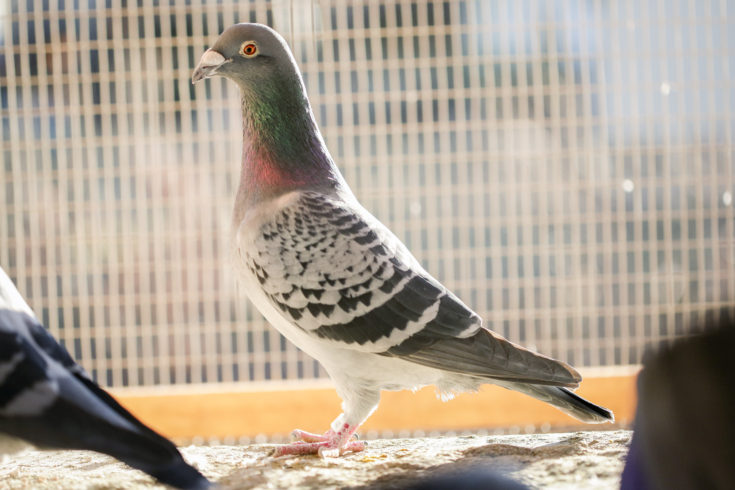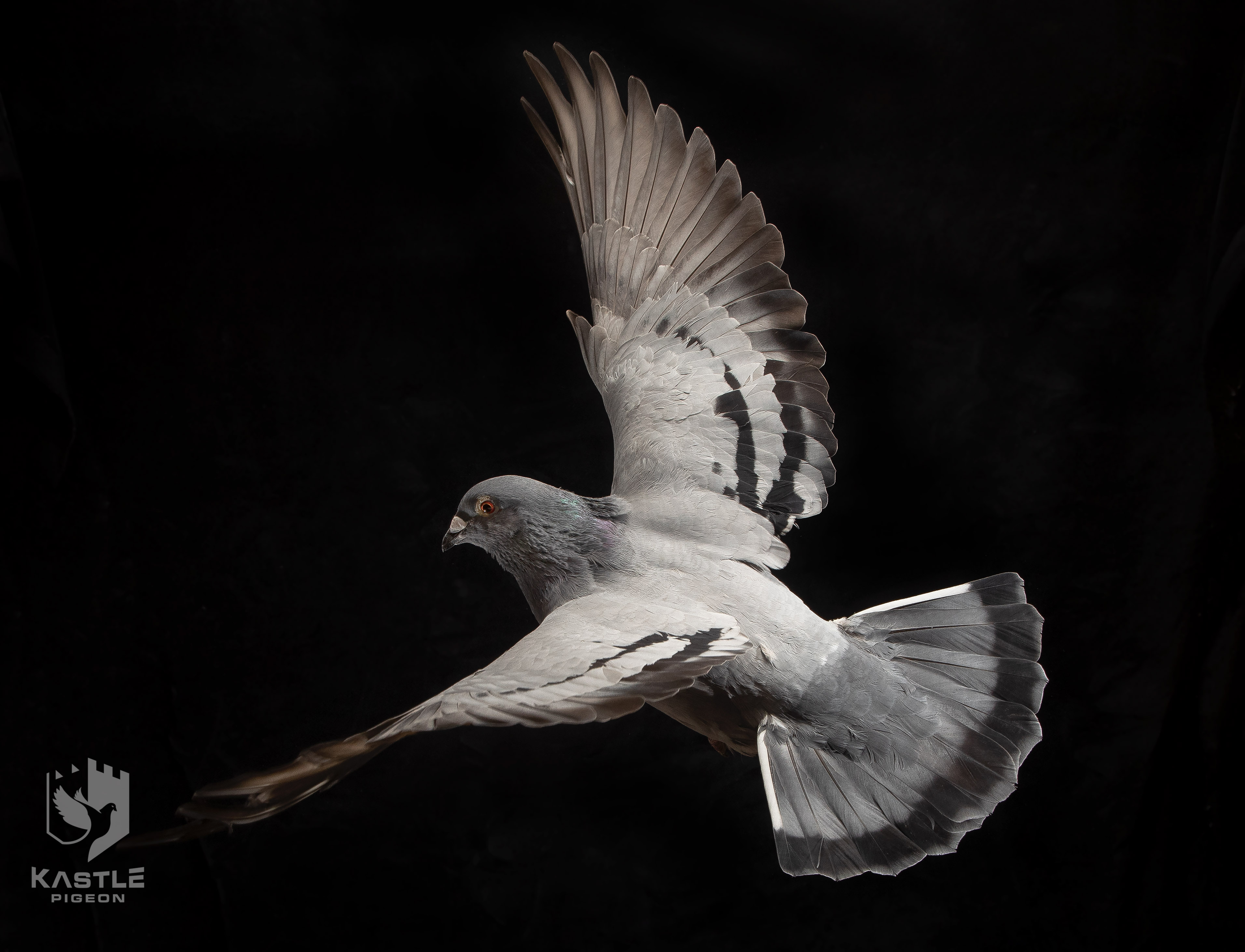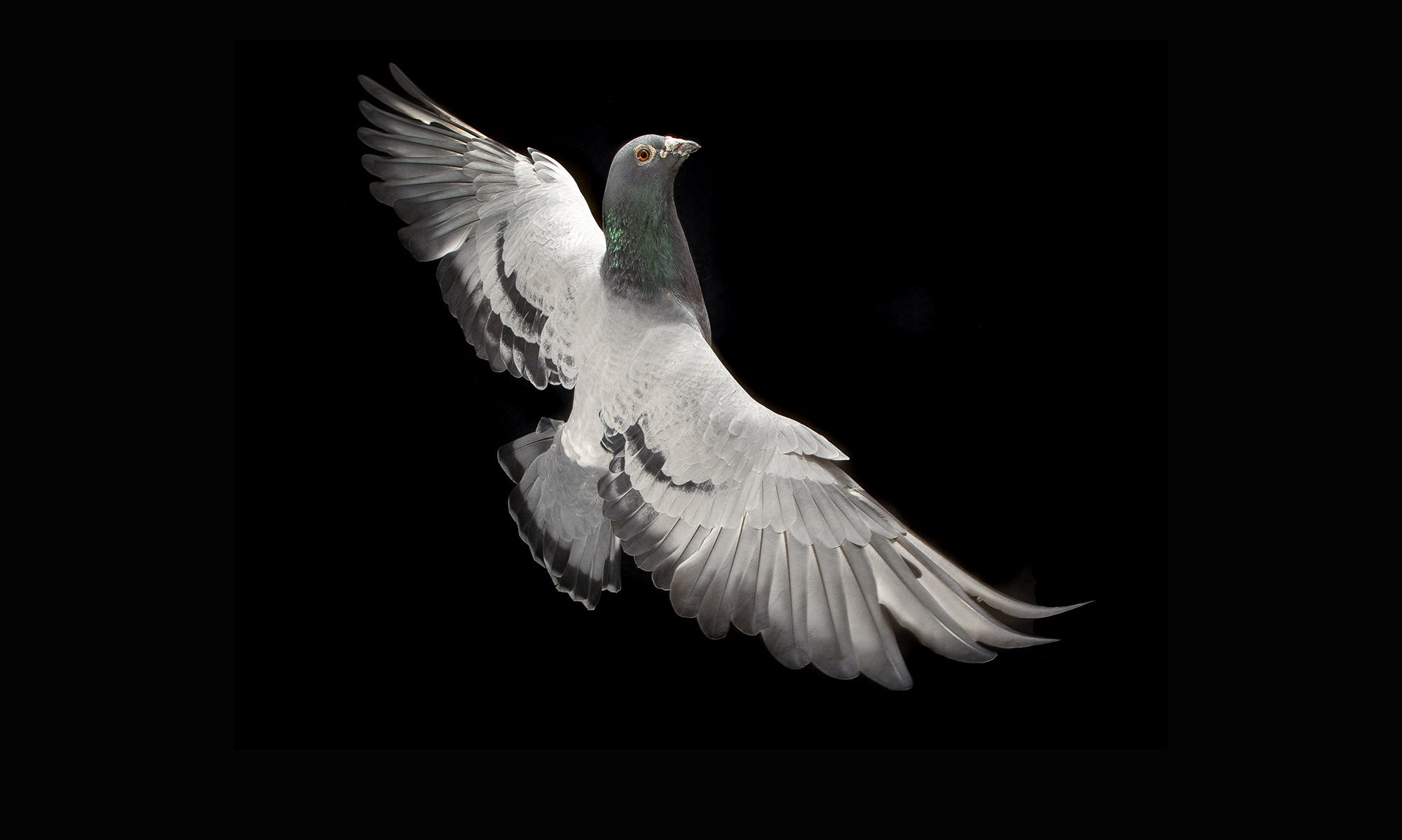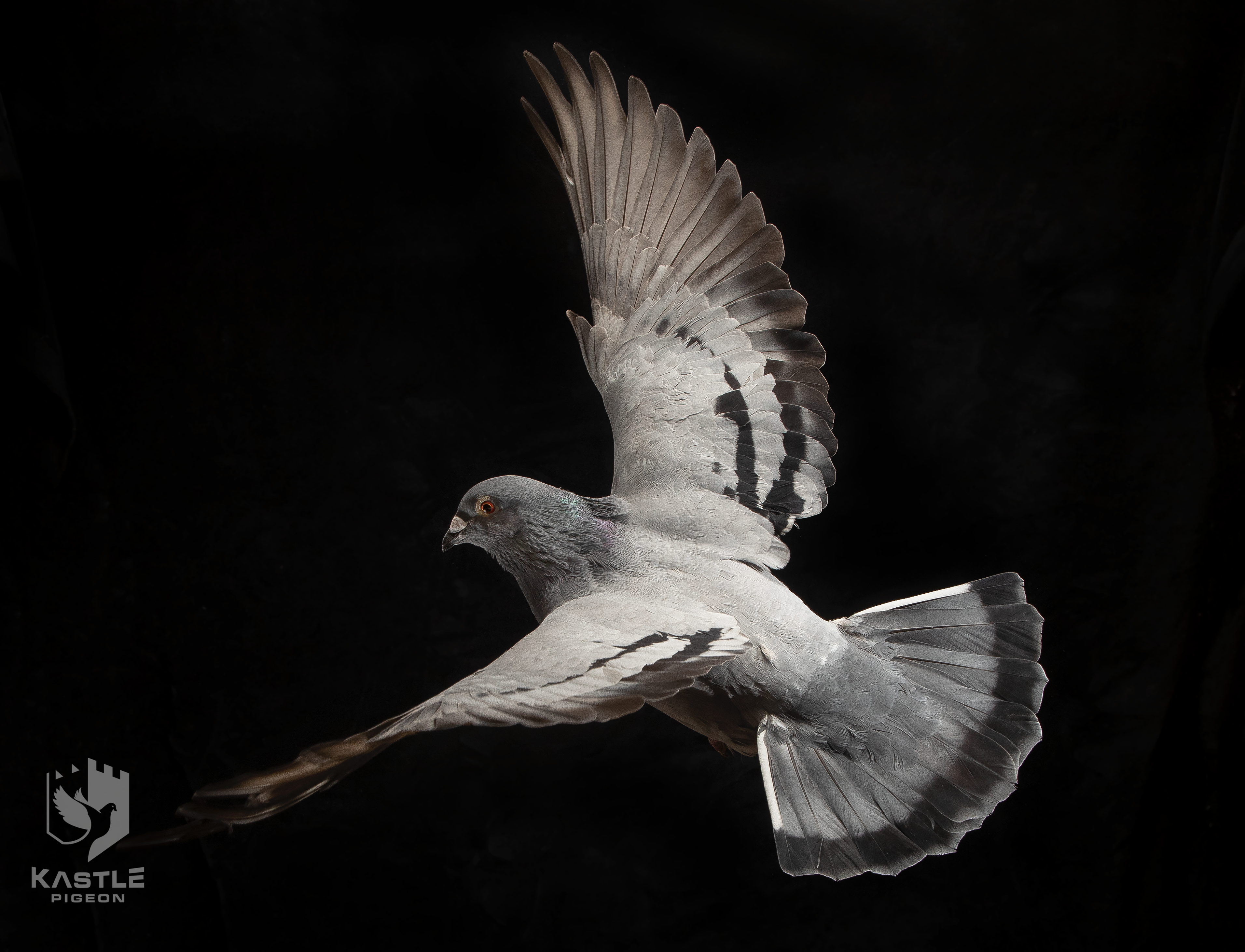
I have been testing my racing pigeons for the LDHA gene since 2015. Now in 2020, what I thought would be a five year project is clearly something I will be working on for a lifetime. In these five years, testing and researching pigeons with both the LDHA and DRD4 genes, I have learned a lot and have refined my breeding philosophy around these genes.
Let’s get this part out of the way right now: these genes are not a magic bullet. Geneticist and pigeon breeder Dave Shewmaker, who is literally writing the book on pigeon genetics, says that there are potentially a hundred genes, if not more, that contribute to the success of a racing pigeon. I agree. Currently we can only test for two of them (well, three technically speaking). No breeder should expect to add these genes to their loft and instantly see win after win. And no breeder should eliminate proven, high-performance pigeons simply because they do not carry LDHA or DRD4.
What is LDHA? LDHA is the gene that stands for a lactate dehydrogenase enzyme in racing pigeons. This is an enzyme that is responsible for both the synthesis as recycling of lactate (out of pyruvate) in the muscles. I encourage you to scour the pigen.be website for more details. But the gist is that the presence of the LDHA gene affects how a pigeon processes the lactic acid it creates during muscle exertion. Basically, the pigeons can process the lactic acid better, they won’t be as sore and they can turn the lactic acid back into energy allowing them to fly longer. Here are some exerpts:
Lactate is made by the so-called white and mixed muscle fibers. It is what causes the pain in muscles when doing physical efforts, especially for efforts related to speed and power. It’s these muscles that are being trained when an athlete goes in anaerobic phase, meaning using as much power as possible. Everyone doing or having done sports knows this causes pain in the muscles. This is caused by the lactate, an acid made by the (anaerobic – without oxygen) burning of glucose. The more an athlete reaches the maximum of his effort, the more lactate is made.
The LDHA gene can be found in two alleles (locations). A pigeon will be one of three variations of LDHA. These three variations are represented by BB, AB and AA. BB means that the pigeon does not carry the LDHA gene. A pigeon that tests as AB carries the LDHA gene in one allele and a pigeon that is AA carries it in both alleles. A very very small percentage of racing pigeons (3-9%) are tested as AA.
From what we see, it seems that this AB genotype is a good indication for top performances, especially in the ace pigeons that race distances where both speed and endurance are important, meaning the day races. This indicates this gene could also be of the utmost importance for one loft racers.
This could be quite logical as it seems this gene can influence how efficiently lactate can be recycled and re-used in the muscles. As it’s the more powerful muscle fibers that are responsible for lactate synthesis it is a normal conclusion this gene has something to do with speed, or better the capability to maintain a certain speed for a longer period of time. This could explain why it is found more in the ace pigeons from 300 to 700 km.
When I tested my first batch of breeders, I was exceptionally lucky to have one of my cocks test as AA. Einstein, a son of Eisenhower and Joint Venture, is a full brother to 3rd place final race of the SAMDPR. His blood runs throughout my loft now and most of the LDHA in my loft originated from him. If his brother won 3rd place in the SAMDPR, makes you wonder if the LDHA played a factor. I believe it did.
A couple of years later I learned of the next piece of the genetic puzzle, the DRD4 genes and I began testing my flock. Those genes are equally rare and I had very very few of them in my small loft of 10 breeding pairs.
Dopamine receptors (DRD4) are found in the brain and have the function to transfer signals of the neurotransmitter dopamine in specific zones inside the brain. From Pigen.be:
Variations in this gene has been associated in humans and animals with character treats and certain mental capabilities. In humans f.e. this receptor has been associated with creativity, more or less sensitivity for depression, etc.
In this recently published research (in the scientific magazine “Animal Genetics”) a number of different variations were found in this dopamine receptor type 4 gene in racing pigeons, of which two were relevant for racing performance. On all distances this influence was found, but only on speed and middle distance races this difference was statistically significant. In this study 1380 racing records were taken into account. (Proskura et al, 2015)
The variant CCCC was associated with the lowest mean in racing performances. The variants CTCC and CCCT with higher averages (statistically significant); and the CTCT variant very clearly had a very high mean in racing performances. This was significantly proven on speed and middle distance. Also on long distance the mean was higher but this could not be proven statistically. More research will have to give more clarity on that.
This is when you say “but there are so many champion racing pigeons that don’t carry these genes!” And yes, there are. That’s why you should never get rid of, or not breed from fantastic race birds. There are too many unknown genes that contribute to their success and we cannot exclude them from our breeding strategies. But consider for a moment the true world-class legends of racing pigeons. Some of the absolute best racing pigeons in the world carried these racing genes. Kannibaal, Harry, Never Say Die, Bliksem, Golden Gaby, Janssens, Porsche 911, Picasso, Wolverine, Said in Spun Silver, Untamed Desert, Eisenhower, Joint Venture . . . I could go on. Isn’t it every pigeon breeder’s goal to have a pigeon the likes of Harry?
It starts to get very complicated when you are testing and breeding for all of the possible variations of these genes. My breeding strategy is to try and “fix” these genes in their homozygous state in my pigeons, but I want my breeders to have proven, high quality racing performance at the same time. This means I have to race and test as many pigeons as possible with these rare genes. I also do not acquire any new pigeons unless I can test them first and know if they carry any of the genes.
I have pretty much stopped racing old birds anymore due mostly to my loft size and time constraints in the spring. I now breed from proven members of my race team. I have “fixed” the LDHA gene in the majority of my breeders. In fact, there are only 3 pairs of the 20 I am breeding from that do not carry any of the genes. 17 pairs in my loft carry 2-7 genes out of a possible number of 8 per pair. I have lost count of the AA birds I am breeding from. That’s a good thing, so I don’t have to worry about losing them anymore. I am breeding from TT pigeons and can get CTCT pigeons on my team regularly. I have a long way to go with the DRD4 genes, particularly with the 456 variation. It was much more difficult to find and it is a slow process to breed, test and propagate a loft with them.
Here are a few summary bullet points that reflect my strategy:
• I use performance and pedigree at the top of my list for selecting breeders. The pedigree reflects the performance of close relatives and how concentrated the genes are. For example, if Picasso is LDHA AB, I could spend $5,000 on a child and only have a 50% chance of the baby being AB, depending on his mate of course. But if I spend $1200 on a double grandchild, I have a decent chance (25%) of getting an AA pigeon, something that would be impossible with a child of Picasso.
• If I add a new pigeon to my loft, it will have the performance and pedigree requirements above, plus it will carry at least one of the performance genes. This is an incredibly difficult combination to find, trust me.
• I race test as many children off my own pairs as I can and then bring the best, along with their performance genes, back into my breeding program. For example, Kastle Kingsman, pictured below, raced in the 2018 Apple Cup one loft race and won $2,000 finishing 20th place, second drop, 3 minutes to win from 350 miles out of 900 birds originally entered in the series. That’s the performance I want and he is AA CCCT. In 2019, I brought another good performing one loft race hen back to Kastle Loft to be mated to Kingsman. She is AB CTCT and performed very well in headwind races at the Sooner Challenge. That pair has very good performances AND the genes. They are mated together in 2020 and their babies will be AA or AB and some combination of CTCT, CCTT or CCCT or CCCC. If I get lucky, one of their babies will be a top performer and be AA CCTT and will make the perfect breeding pigeon, homozygous in two locations.
• I have a couple of test pairs that are a little farther away from performance than I’d like. But I bred them to be homozygous LDHA (AA) and homozygous DRD4 (TT). The goal is to get babies that are AA CTCT which is statistically the best combination for racing. The odds of these babies having the right combination of the other 98 or so genes is smaller since their parents haven’t been race tested. But I’m willing to have a few test pairs like this in case I get lucky.
• I keep my best breeding couples, no matter how they test for the performance genes. I simply use them to mate to the pigeons that do test positive for the genes. This is what takes so long to fix the genes in your loft. My #1 breeding pair does not contain a single LDHA or DRD4 gene. I have no intention of breaking them up because their babies are just that good. But I take their best performing babies and cross onto the best performing pigeons who are homozygous for LHDH or DRD4 or both. Those babies are race tested and the best ones will carry the genes, have performance, and qualify to move into the breeding program. As my couples get older and stop breeding, you can see how eventually every breeding pigeon in my loft will contain these genes, but also have some kind of performance record.
We are always looking for competitive advantages, whether it be through bloodlines (genes), feed, training, supplements, eye sign or wing-theory (two things I do not ascribe to until I see research that proves it). It remains to be seen how much these performance genes in pigeons will elevate the performance of a particular pigeon. Research shows that very successful pigeons carry them. If I can add another 3-5% of a performance advantage to my pigeons with these genes, you can bet I will. These last five years have seen an improvement in my results locally in my small club and also in futurities and one loft races. Hopefully those improvements will continue over the next five years and beyond.



